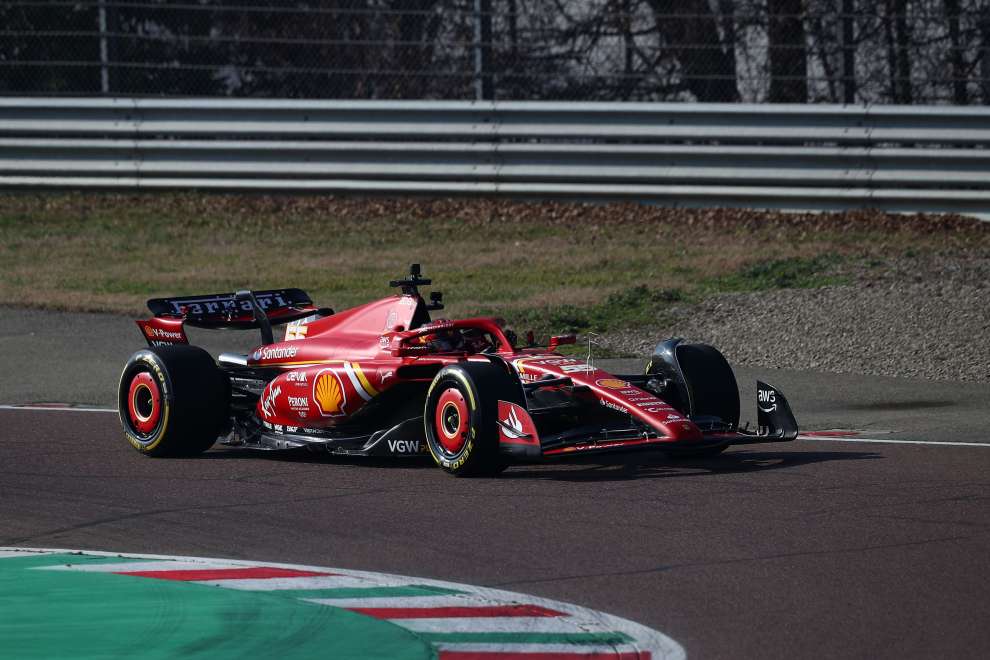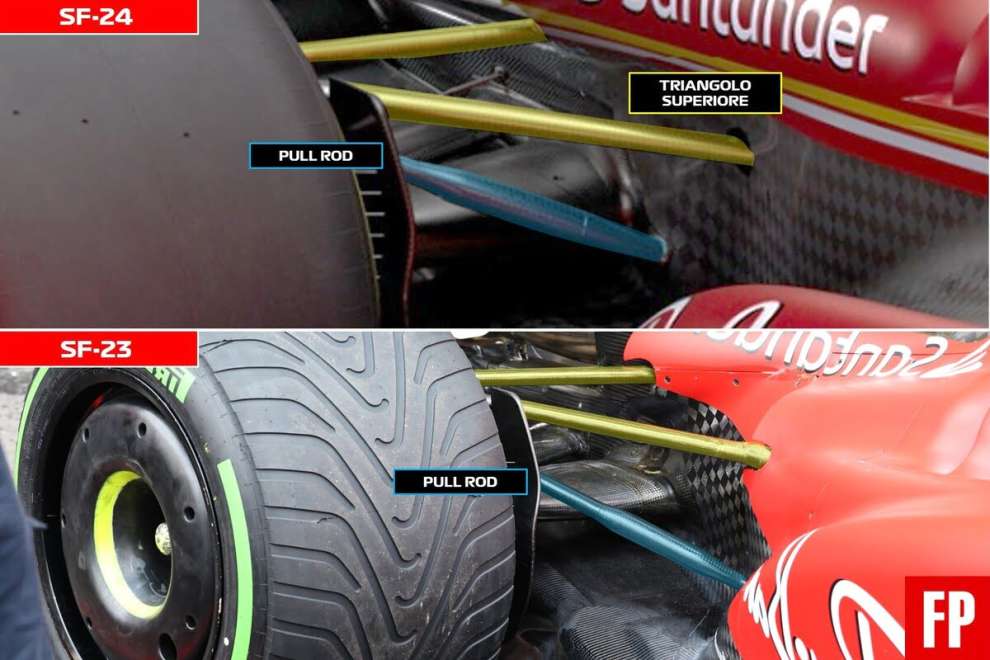Ferrari 2024 is the result of a new development direction undertaken in Maranello, which for some months now has been approaching the concept of the Red Bull school. The SF-24 features some of the popular grid solutions, such as dipped bellies and side impact structures integrated into the bottom, but not all. On the new Rossa it is no push-rod rear suspension, now adopted by the entire competition with the exception of Haas. Technical director Enrico Cardile explained the reasons for the choice, also illustrating the philosophy behind the new concept of the SF-24.
The change of concept
The new Ferrari collects the legacy of the development work undertaken last season, with which the Cavallino began to correct the ways in which the car was designed to work and generate load: “With the previous concept, we had reached the limit of what could be extracted”explains Cardile. “To squeeze out further performance, essentially through the aerodynamics of the surface, it was crucial to undergo a restructuring of the car's architecture, following a direction that is now quite widespread on the grid”.
On more than one occasion Adrian Newey, one of the main architects of the world champion Red Bulls, explained how the concept initially proposed by Ferrari in 2022 was as valid as that of the Anglo-Austrian team. The regulatory changes to the fund introduced in 2023, however, penalized the Maranello team in its strong point, the aerodynamic load in fast corners, contributing to Red Bull's rise and subsequent escape. According to Cardile however, Ferrari would have changed its concept even without the changes to the regulations.
“I don't think the regulatory change has influenced what we have done”explains the technical director. “The concept of 2022 was good, but, in terms of how far we could progress, we would have made less progress compared to the new concept. The choice is linked to the peak performance that can be achieved with a given concept. The 2022 car was stable and had a lot of load, but when we started to increase it we began to believe that a new concept would allow us to go even further.”
The Red of driveability
The concept behind the SF-24 has driving predictability as one of its driving objectives. “We worked with some ambitious goals in terms of lap timesalso limited by driveability”, reveals Cardile. “We wanted to lower the times, while trying to give the drivers a better car to drive and robust in all conditions in terms of wind and asphalt temperature”.
“Part of the driveability lies in the ease with which performance can be extracted, which can be easier on new tires and an unloaded car, and then become more treacherous with worn tyres. If we worked on driveability, that's right to develop a better race pace. The intention is to maintain competitiveness in qualifying, while managing to develop greater consistency over the long distance.”
“Last year we did a great job in understanding what handling meant in terms of the aerodynamic map. When defining objectives, we evaluated several options and in the current solutions we have found the best way to reach them”. Cardile also makes a reference to the tie rod rear suspension, preferred to the strut scheme adopted by all the rival teams, with the exception of the client Haas.

The reason for the pull rod
With the spread of the flat-bottomed bodywork, almost all teams have standardized on the push-rod rear suspension. Since the strut implements the spring-shock absorber group in the upper part of the transmission, the push-rod scheme frees up space in the lower part, removing an obstacle to the circulation of the flows collected from the sides. A solution also analyzed by Ferrari: “We evaluated several schemes for the rear suspension. For what our goals and flow management are, we have found a good compromise with the current suspension layout. When I talk about trade-offs, I'm talking about aerodynamic performance and suspension compliance.”
However, the differences between Ferrari and the competition do not only lie in the auction: “Actually our suspension is slightly different regarding the arrangement of the arms compared to Red Bull for example, to mention one team” explains Cardile. “We have seen good aerodynamic results by moving in this direction. Moving from pull-rod to push-rod instead we have not noted any such advantages to justify the compromise in terms of weight and compliance”.
The push-rod scheme would have sacrificed the kinematics of the suspension in favor of better flow circulation, but Ferrari believes that the final compromise would not have been superior to the current pull-rod with the different arrangement of the arms: “We don't plan on changing the suspension during the season. Let's see where we get with development, but so far we are happy with this configuration.” Furthermore, the SF-24 can count on a new layout for the internal spring-shock absorber group, considered innovative: “The mechanics of the rear suspension are located differently inside the transmission case. It's a new concept, for us it is an innovationbecause it is a different way of managing the suspension compared to what was done in the past.”

On with the development
Cardile reveals that the SF-24 will take to the track in Bahrain in the same guise presented in Maranello, although developments are already in the pipeline: “The wind tunnel machine is already evolving compared to the one presented. We will decide when it will be best to bring the first updates to the track.” Ferrari expects to be able to adopt a more aggressive approach in the evolution of the car, thanks also to the revision of the CFD models for virtual aerodynamic analyses: “In recent years we have developed a simulation methodology that allows us to predict porpoisingwith the aim of pushing aerodynamic development up to the limit of porpoising, without however going beyond it”.
Bringing updates continuously will be doubly important this year, considering the high probability that the 2025 car will be an evolution of the current one: “It is crucial to have a good starting point this year, because next year many efforts will be diverted to the 2026 car, which will be very different in regulatory terms. It is also important to maintain a good pace with development, so as to arrive in 2025 in good shape,” concludes Cardile.
#Ferrari #SF24 #Red #Bull #push #rod
